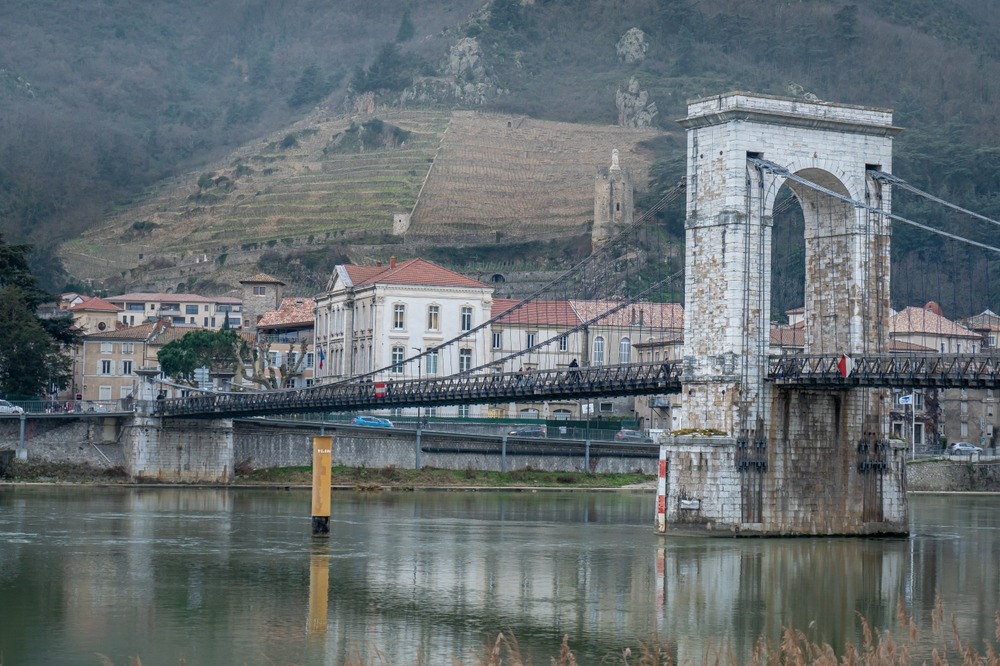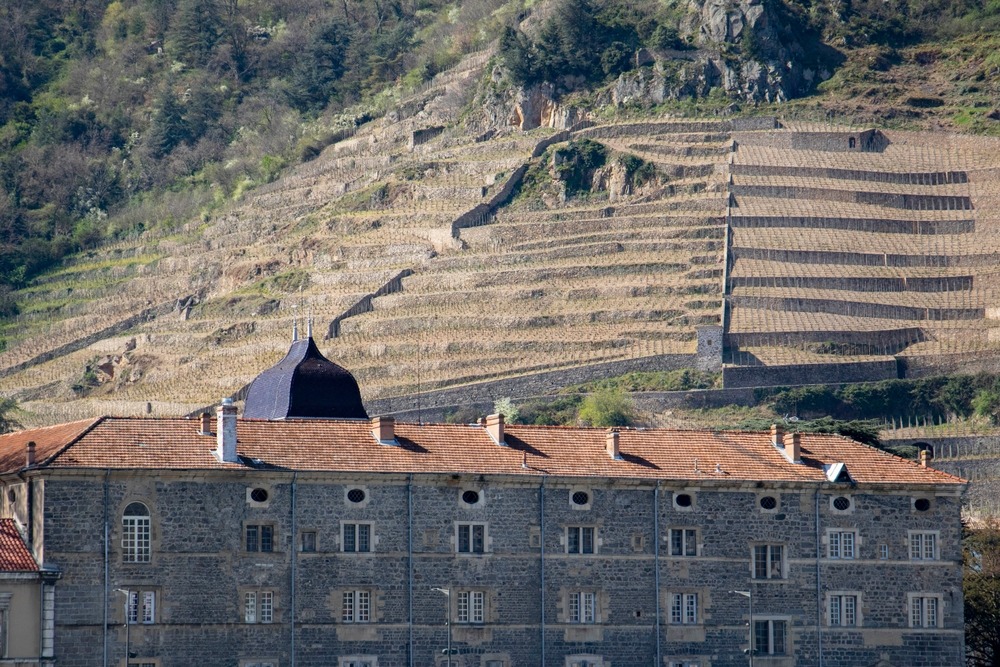Tournon-sur-Rhône, France: A Historic Jewel of the Rhône Valley – History and Top 25 Attractions

A DETAILED HISTORY OF TOURNON-SUR-RHÔNE
Origins in Antiquity
Tournon-sur-Rhône, nestled along the west bank of the Rhône River in the Ardèche department of southeastern France, is one of the region’s most historic and picturesque towns. Its story begins in antiquity, when Celtic tribes settled the area prior to Roman occupation. Archaeological evidence suggests that the site served as a strategic point along the Rhône, a vital trade and transportation artery even in ancient times.
During the Roman period, the town—then known as Tournonum—grew as a fortified river crossing and administrative center. The Rhône’s importance as a commercial and military route fostered Tournon’s development, and it became an integral part of the Roman road network connecting Gaul to the Mediterranean.
Medieval Rise and Strategic Importance
In the early Middle Ages, the region was subject to invasions by Visigoths, Burgundians, and later the Franks. By the 9th century, Tournon had become a feudal stronghold under the control of local lords. Its strategic location made it a key military and trading post during the medieval period.
By the 12th century, the powerful Counts of Tournon ruled from the Château de Tournon, a fortress that loomed protectively over the Rhône. The town was heavily fortified, and its castle served as both a defensive stronghold and a noble residence. The Tournon family rose to prominence, holding high-ranking positions in the French court and church. Cardinal François de Tournon, born in the city in the 15th century, was a notable figure in French politics and religious diplomacy.
Renaissance to Revolution
During the Renaissance, Tournon flourished culturally and economically. The city became a center of humanism and learning under Cardinal de Tournon’s patronage. In 1536, he founded the Collège de Tournon, which became one of the most esteemed schools in France, later managed by the Jesuits. The city’s ecclesiastical and intellectual legacy from this period is still felt today.
Tournon’s fortunes waned somewhat during the Wars of Religion in the 16th century. As a Catholic stronghold in a region with significant Protestant populations, it saw episodes of violence and fortification reinforcement. Despite these upheavals, it retained its role as a regional hub for commerce and governance.
19th Century Industrialization and the Rhône Connection
The 19th century brought modernization, particularly with the construction of the Marc Seguin suspension bridge in 1825—France’s first suspension bridge. Designed by Marc Seguin, a local engineer and industrial pioneer, it connected Tournon to Tain-l’Hermitage across the river and marked a turning point in European bridge-building.
During this period, Tournon saw growth in winemaking, paper production, and river commerce. The Rhône remained the economic lifeblood of the region, complemented by the expansion of the railway.
World Wars and Contemporary Tournon
Tournon, like much of France, endured hardship during both World Wars. In World War II, it was part of the Free Zone until 1942, but faced German occupation and resistance activity. The postwar years focused on rebuilding and cultural preservation.
Today, Tournon-sur-Rhône is known for its charm, cultural heritage, and scenic beauty. It is a gateway to the northern Rhône wine region, with a close relationship to its twin town, Tain-l’Hermitage, just across the river. The town attracts travelers with its historic sites, vineyards, riverfront setting, and festivals.

TOP 25 ATTRACTIONS IN TOURNON-SUR-RHÔNE
1. Château-Musée de Tournon
Dominating the skyline, this 10th-century castle houses a museum of local history, fine art, and regional artifacts. The ramparts offer panoramic views of the Rhône and surrounding vineyards.
2. Suspension Bridge of Marc Seguin
Built in 1825 by local engineer Marc Seguin, this historic bridge was a marvel of its time and is still in use. It symbolizes the union between Tournon and Tain-l’Hermitage.
3. Collégiale Saint-Julien
A beautiful 14th-century church with a striking bell tower, Gothic architecture, and notable works of religious art. It serves as the town’s spiritual heart.
4. Les Quais du Rhône
The Rhône riverbanks are perfect for strolling or cycling, with beautiful views of the water, vineyards, and the town’s historic facades.
5. Old Town (Vieille Ville)
Explore narrow cobbled streets, Renaissance houses, artisan shops, and cafés in this well-preserved medieval quarter.
6. Jardin d’Ermitage (Terraced Garden)
Located beside the castle, this scenic garden terrace offers beautiful floral displays and sweeping views over the river and vineyards.
7. The Marc Seguin Museum (Maison Marc Seguin)
Dedicated to the famous inventor, this museum explores the life and innovations of Marc Seguin, including his contributions to suspension bridges and steam engines.
8. Musée Pierre Palmade (formerly Musée Histoire Naturelle)
This small museum hosts temporary art and historical exhibitions in a historic building near the castle.
9. Train de l’Ardèche (Mastrou Steam Train)
A heritage railway offering vintage steam train rides through the gorges of the Doux River valley—a must-do for families and history lovers.
10. Le Doux River Promenade
This peaceful trail follows the course of the Doux River, ideal for walking, birdwatching, and enjoying the rural landscape.
11. Grand Pont Romain
A historic stone bridge that once linked parts of the region during the Roman and medieval periods; remnants are visible along ancient routes.
12. Hermitage Vineyards Viewpoint
From Tournon’s hills, enjoy an unbeatable view of the Hermitage hillside vineyards—a UNESCO candidate landscape known for world-class wines.
13. Weekly Market (Place Rampon)
Held every Saturday, this vibrant market offers local produce, Ardèche cheeses, olives, sausages, honey, and handcrafted goods.
14. Théâtre Jacques Bodoin
Tournon’s cultural theater offers drama, music, and community performances in a historic venue.
15. École et Collège de Tournon
Still functioning today, the former Jesuit college founded in 1536 remains a pillar of Tournon’s intellectual history.
16. Place Carnot
A charming town square with shaded trees, public art, and lively café terraces—a great place to relax.
17. Maison de la Presse Historique
A unique exhibition space that showcases the evolution of local and national journalism and print culture.
18. Port de Plaisance (Marina)
A small leisure port on the Rhône that hosts pleasure boats, kayakers, and river cruises in summer.
19. La Chapelle Saint-Christophe
Perched on a small hill, this simple yet atmospheric chapel offers quiet reflection and scenic views.
20. Arboretum de Tournon
Located near the lycée, this green space displays a wide variety of native and exotic tree species with educational trails.
21. Les Vieux Remparts (Old Ramparts)
Remnants of Tournon’s medieval fortifications offer insight into its historic defenses and provide scenic vantage points.
22. Canoe and Kayak Club
For adventurers, Tournon’s riverfront offers rental services for kayaking on the Rhône or Doux rivers.
23. Artisan Boutiques (Rue Boissy d’Anglas)
Discover local craftspeople selling pottery, woodwork, textiles, and regional specialties in this pedestrian-friendly area.
24. Galerie d’Art Municipale
A city-run art gallery that showcases works by local and regional artists, often featuring sculpture and painting exhibitions.
25. Wine Cellar Tours and Tastings
While many wineries are located across the river in Tain-l’Hermitage, Tournon hosts several wine cellars and tasting rooms where visitors can sample Rhône Valley wines, especially Syrah and Marsanne varietals.

Tournon-sur-Rhône is a town where history and heritage flow as gracefully as the Rhône River beside it. With roots in antiquity, a legacy of innovation through figures like Marc Seguin, and a proud connection to wine, education, and art, Tournon is both a cultural landmark and a scenic haven. Whether crossing its historic suspension bridge, sipping local vintages in the shadow of a castle, or riding a steam train through Ardèche hills, visitors discover a town that embodies the very soul of southern France: timeless, charming, and alive with tradition.

































